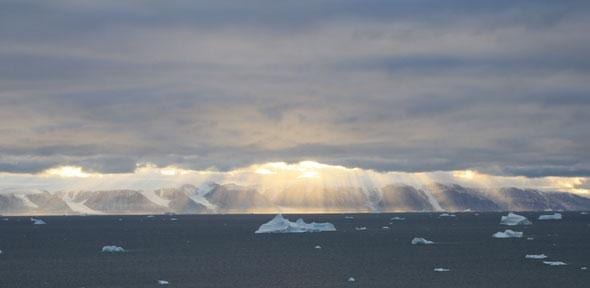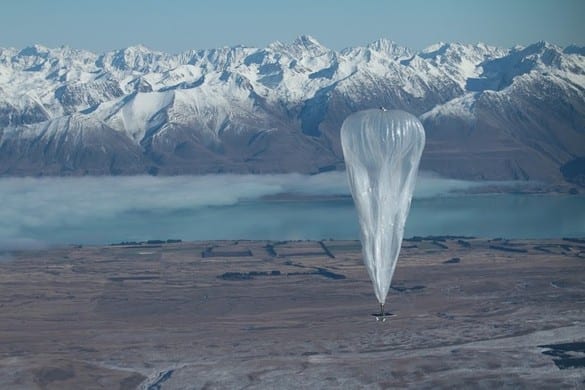
Economic modelling shows that the possible methane emissions caused by shrinking sea ice from just one area of the Arctic could come with a global price tag of 60 trillion dollars – the size of the world economy in 2012.
As the Arctic warms and sea ice melts at an unprecedented rate, hitting a record low last summer, the thawing of offshore ‘permafrost’ – frozen soil – in the region is releasing methane, a powerful greenhouse gas.
Scientists have previously warned that there are vast reservoirs of methane in the Arctic, hundreds of billions of tonnes of a gas many times worse than carbon dioxide for global warming – of which only a fraction needs releasing into the atmosphere to trigger possibly catastrophic climate change.
Now, researchers from Cambridge and Rotterdam have for the first time calculated the potential economic impact of a scenario some scientists consider increasingly likely: that the methane below the East Siberian Sea will be emitted, either steadily over the next 30 years or in one giant “burp”.
Writing in the journal Nature, the academics say that just this area’s methane alone – some 50 billion tonnes, or 50 gigatonnes – would have a mean global impact of 60 trillion dollars, an amount very similar to the size of the entire global economy last year. Current US national debt stands at a mere 16 trillion dollars in comparison.
The economic impact modelled was only for the methane existing on the East Siberian Arctic Shelf, and “the total price of Arctic change will be much higher,” they warn.
“Arctic science is a strategic asset for human economies because the region drives critical effects in our biophysical, political and economic systems,” write the academics, who say that world leaders will “miss the bigger picture” without factoring in Arctic methane projections – as neither the World Economic Forum or the International Monetary Fund currently recognise the economic danger of Arctic change.
The new results were achieved using PAGE09, the latest version of the PAGE integrated assessment model developed by Dr Chris Hope from Cambridge Judge Business School. PAGE09 is currently used by the US Environmental Protection Agency, and an earlier version was used for the UK Government’s Stern Review in 2006 – the major report on climate change economics on which Hope was a specialist advisor.
For the latest research, Hope worked with Gail Whiteman, Professor of Sustainability at Erasmus University, and Cambridge’s Peter Wadhams, Professor of Ocean Physics, who has been studying the disappearance of Arctic ice for 40 years.
The three academics, who co-authored today’s Nature Comment article, built the projections on previous fieldwork in the region by Dr Natalia Shakhova and colleagues from the International Arctic Research Center at the University of Alaska, described by Wadhams as “the only people with the geological knowledge to make estimates about methane emission in this area”.
The PAGE09 model was then employed to translate the extra methane emissions from the East Siberian Sea into global impacts by considering the huge range of environmental changes they might cause – from increasing global temperature and sea levels to consequent flooding, public health and extreme weather.
The model was run 10,000 times to assess the range of risks and provide robust results. The team insist that both the scientific predictions and economic modelling are far from worst-case scenarios, and that the figures represent the mean result from “the whole range of available science and economics”.
“That’s how the model works, how it was used for Stern and by the EPA, it’s the only way I’ll allow it to be used,” said Hope. “The model has to be run with broad ranges for the inputs, it’s not justifiable otherwise.”
“This is the first calculation of its kind that we know of,” he adds, “and we welcome anyone who wants to take this forward and build on it so we can have a discussion – but we don’t have long to discuss it! This is so big and if it happens it could happen fast; people need to wake up to the possible reality we face”.
“This is a warning to the world borne out of many decades of research on all our parts, including forty years of ice thinning measurements from UK submarines,” said Wadhams, “it is a considered statement with enormous implications”.
The Latest Bing News on:
Arctic methane release
- Arctic permafrost now a net source of greenhouse gases, say scientistson April 27, 2024 at 4:36 am
The researchers compiled many past estimates of greenhouse gas flux in various sections of the northern permafrost region to reveal how the entire area is responding to climate change. They found that ...
- Researchers shine light on rapid changes in Arctic and boreal ecosystemson April 16, 2024 at 7:54 pm
Jan. 15, 2024 — The Arctic, Earth's icy crown, is experiencing a climate crisis like no other. It's heating up at a furious pace -- four times faster than the rest of our planet. Researchers are ...
- Exploding craters and overflowing landfills are unexpected sources of methaneon April 2, 2024 at 4:59 pm
And while the precise reasons these craters are appearing in the Russian Arctic ... that glacial methane emissions require oxygen-free environments, such as vast ice sheets. "The release of ...
- Study shows Greenland absorbs more greenhouse gas methane than it emitson January 31, 2024 at 5:57 pm
Methane lasts 12 years in the atmosphere, compared with centuries for CO2, but it has a greenhouse effect 25 times more powerful than that of CO2. In the Arctic, it is released into the atmosphere ...
- Scientists warn, Arctic methane is a ticking climate timebombon December 13, 2023 at 7:10 am
It covers about 15% of the Earth’s land surface and contains large amounts of organic matter that can release methane ... of permafrost and methane in the Arctic region.
- Good Gas, Bad Gason February 17, 2021 at 7:50 am
The Arctic has warmed much faster than the rest ... triggering a massive methane release that would amplify the warming. A few scientists take seriously a catastrophic scenario in which the ...
- THE ARCTIC MELTDOWNon August 12, 2020 at 8:31 pm
And recent science indicates that vast stores of methane are locked up in the Arctic, which — if released by warming — could dwarf previous global emissions and may already be being released by ...
- Methane Hydrates and Contemporary Climate Changeon January 14, 2020 at 4:02 am
Down the rabbit hole: Toward appropriate discussion of methane release from gas hydrate systems ... Geothermal evidence from permafrost in the Alaskan Arctic. Science 234, 689-696 (1986).
- Scientists name a new reason for methane release in the Arcticon May 23, 2019 at 10:11 pm
Russian scientists came to "understanding of the mechanism of massive methane release from bottom sediments of the East Siberian Arctic shelf," the article reads. Active releases not only ...
The Latest Google Headlines on:
Arctic methane release
[google_news title=”” keyword=”Arctic methane release” num_posts=”10″ blurb_length=”0″ show_thumb=”left”]
The Latest Bing News on:
Methane release
- Shocking NSW methane emissions reporton April 30, 2024 at 1:33 pm
The Greens are calling for a halt to all new coal mine approvals after a new report has revealed that methane emissions from open cut coal mines could be producing twice as much methane than is ...
- Damage from methane adds to pressure for carbon levyon April 30, 2024 at 12:14 am
Australia is pumping out "simply astounding" levels of methane masked by unverified self-reporting of greenhouse gases by industry, independent data suggests.
- Abbarno tours Cowlitz County methane capture project, highlights benefitson April 29, 2024 at 5:00 pm
according to a news release from Abbarno. The project's six internal combustion engines will process landfill methane gas, producing approximately 8 megawatts of electricity for the benefit of Cowlitz ...
- Wyoming joins fight against federal methane regulationson April 29, 2024 at 1:00 pm
State leaders say a federal bureau has overstepped its authority, and now threatens to raise the cost of doing business for oil and gas operators ...
- Zefiro Registers its First Methane Reduction Project on American Carbon Registryon April 29, 2024 at 6:20 am
In April 2024, Zefiro’s first project listing was made public on American Carbon Registry, which was established in 1996 as the world’s first carbon crediting program and remains one of the largest ...
- Colorado State University lands $25 million grant to boost methane detection workon April 29, 2024 at 1:05 am
The Methane Emissions Technology Evaluation Center (METEC) in Fort Collins, Colorado, has received a $25 million grant from the U.S. Department of Energy to expand its methane leak simulator site. The ...
- Methane could be sealed under solidified salt in Martian regolithon April 26, 2024 at 5:36 am
The mysterious appearance of methane on Mars, observed by NASA's Curiosity Mars rover, has puzzled scientists for some time. The gas is only observed in Gale Crater, and what's even more surprising is ...
- Methane Eating Microbes - A Novel Solution For Greenhouse Gas Mitigationon April 25, 2024 at 7:00 am
Methane is a significant contributor to human-driven greenhouse gas emissions, but there is useful group of microbes that can help because they use methane for food.
- Breeding cows that fart less could help curb global warming: new studyon April 23, 2024 at 3:02 pm
New research suggests that breeding dairy cows to fart less — and, therefore, release less methane — could cut down on greenhouse gases. The team from Curtin University Sustainability Policy ...
- Zefiro Methane Founder and CEO Talal Debs Interviewed on the Smarter Markets Podcaston April 19, 2024 at 7:45 am
Zefiro Founder and CEO Talal Debs PhD was interviewed by Smarter Markets podcast host David Greely earlier in April 2024. The full 36-minute episode can be accessed through this link or by searching ...
The Latest Google Headlines on:
Methane release
[google_news title=”” keyword=”methane release” num_posts=”10″ blurb_length=”0″ show_thumb=”left”]











